Filippino Bishop Arturo Bastes is leading a campaign by Catholic clergy to shut down a gold and copper mine on Rapu-Rapu Island in the central Philippines. Bishop Bastes hounded the mine’s Australian developers after a chemical spill at the site, and is now working on shutting down the new owners–a consortium headed by South Korean industrial giant LG International Corp. 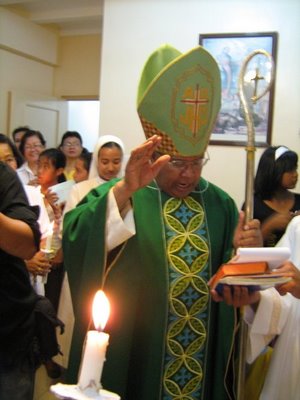
In the process, Bishop Bastes–with the support of the Catholic hierarchy in the Philippines–risks thwarting a plan by President Gloria Macapagal Arroyo, herself a Catholic, to tap the Philippines’ mineral wealth to help lift the country out of poverty.
Bishop Bastes is following a global trend of Catholic clergy taking on mining, especially in Central America. Priests in the Honduras are protesting open-pit mining techniques and mining-rights laws which they say grant too many benefits to foreign mining companies.
When the church began campaigning against mining in the 1980s, more than 50 mines operated in the Philippines, contributing a fifth of the country’s exports. The number of mines decreased to 12 in 2003 as opposition intensified.
“It’s written in the Bible,” Bishop Bastes says, quoting the book of Numbers, chapter 35, verse 34: “Do not defile the land where you live and dwell.”
Environmentalists and activists such as Jaybee Garganera, of the Philippines’ Anti-Mining Alliance, credit Bishop Bastes and other church leaders for turning mining into a mainstream issue. “It’s debatable whether we would have gained the same traction without the Church,” Ms. Garganera says.
The Rapu-Rapu mine was supposed to illustrate the Philippines’ new pro-mining policy. But the Australian founder of the project, Lafayette Mining, Ltd., felt the brunt of Bishop Bastes’ force when it began operations in 2005.
“Our project became politicized very quickly,” said David Baker, who took over the management at Lafayette in 2006 after a chemical spill at the site killed thousands of fish. That incident enabled Bishop Bastes and others to successfully petition the Philippine government to order the mine closed. Lafayette eventually sold the mine in 2008 to a South Korean and Malaysian consortium headed by LG International, headquartered in Seoul.
Bishop Bastes and his allies have marched on the South Korean embassy in Manilla to protest the resumption of mining and are tapping environmental experts to expose the dangers of chemical leaching from the project. “Mining is the cause of all the trouble,” Bishop Bastes said. “God created the world for people to enjoy, not for miners to destroy.”
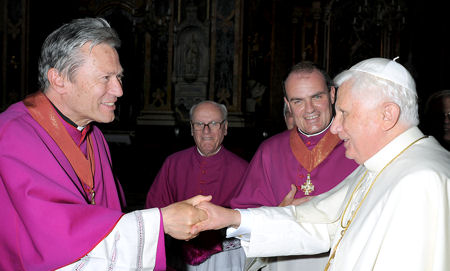
One of Pope Benedict XVI’s recent episcopal appointments is that of Karl Golser, 65, as the new bishop of the Bolzano-Bressanone diocese in northern Italy. Not only is the diocese a particular favorite of the pope, who has taken his summer vacations there since the late 1960s, but Golser is also a long-time associate of Benedict.
He worked under then Cardinal Joseph Ratzinger in the Congregation for the Doctrine of the Faith in the early 1980s and stayed in touch with him afterward.
Golser is widely considered among the leading eco-theologians on the European Catholic scene, which means that Benedict has chosen to introduce a strong new environmental voice in the episcopacy.
During an interview with John L. Allen, Jr. of the National Catholic Reporter, Golser was asked about Benedict’s core ideas on the environment. “It’s not an accident,” Golser said, “that many of the Holy Father’s comments on the environment have come on Sundays…That’s very important. Sunday is the day we live the joy of redemption, and it also expresses a new relationship with time and space. It’s about the return to Christ, the Parousia. In the Eucharist, it’s also about offering the earth itself back to God, in the consecration of bread and wine.”
“I think the Holy Father draws a great deal on Eastern theology and the fathers of the church, who have a great sensibility for the cosmic dimension of the faith. Starting from the Eurcharist, the liturgy, they propose a whole style of life that’s in harmony with all of creation. There’s a strong current in Eastern thought, for example, on humanity as the “priest of creation.”
Read the whole interview here.
Archaelogists reported they have identified the remains of Nicolaus Copernicus.
Swedish genetics expert Marie Allen analyzed DNA from the bones and compared it to that taken from two hairs retrieved from a book that the Polish astronomer owned.
The discovery put an end to centuries of speculation about the final resting place of Copernicus, a priest and astronomer whose theories identified the sun as the center of the universe. Copernicus died at age 70 in 1543.
Polish archaeologist Jerzy Gassowski told a news conference forensic reconstruction of the skull his team found in 2005 buried in a cathedral in Frombork, Poland, bears striking resemblance to portraits of the 16th century astronomer.
The reconstruction shows a broken nose and other features that resemble a self-portrait of Copernicus, and the skull bears a cut mark above the left eye that corresponds to a scar in the painting. 
St. Adamnan, the biographer of St. Columba, recorded an encounter with the Loch Ness Monster in 565 A.D. 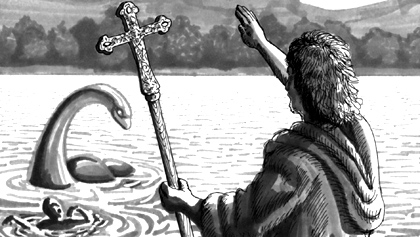
St. Columba was on his way to visit with the Pictish king in Inverness, came upon some Picts burying the remains of one of their people. They told Columba that the poor man had been bitten and mauled to death by a water monster.
The dead man’s boat lay on the other side of the water. Columba ordered one of his followers to swim across and retrieve the boat.
One of his companions, Lugneus Mocumin, stripped down to his tunic and plunged into the water.
The monster saw him swimming, and having tasted blood, broke the surface of the water and made for him. Everyone who was watching was horrified, and hid their eyes in terror.
In the words of St. Adaman: “The monster suddenly rushed out and giving an awful roar, darted after him with its mouth wide open, as the man swam in the middle of the stream.”
St. Columba raised his hand, made the sign of the Cross and “commanded the ferocious monster saying, ‘Thou shalt go no further, nor touch the man; go back with all speed.’ Then at the voice of the saint, the monster was terrified, and feld more quickly than if it had been pulled back with ropes.”
“According to Bernadette, the apparition asked for a church to be built, and today a vast basilica rises above the shrine, visible testimony to the wealth and power of the institutional Church.”
“Yet the spiritual life of Lourdes is focused on the grotto and its surroundings beneath the basilica, and this topography acts as a metaphor for the relationship between the religious institution and the powerful undercurrent of faith that it can never fully control.” 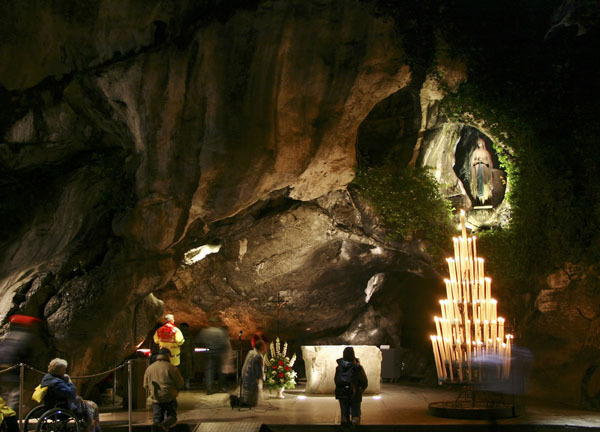
“The rocks around the grotto have been worn smooth by the touch of millions of hands, and there is a sense of something visceral, pagan even, about the way in which Catholic devotions and prayers melt and mingle with the…mystery of a God both veiled and revealed in earth, wind and fire, in rocky wildernesses and the untameable persistence of nature in the face of all our civilizing and controlling impulses.”
“Surely, an incarnational faith is one which situates itself in such a space of encounter between the sublime and the ridiculous – between the inscrutable majesty of God, and the often foolish muddle of our human emotions.” 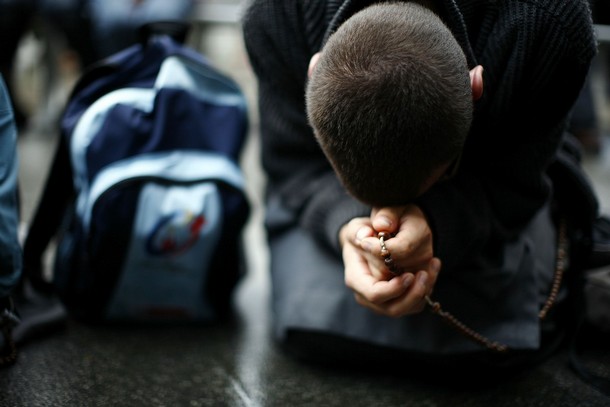
From “An Immense Maternal Presence,” an article by Tina Beattie in the September 13, 2008 edition of The Tablet.






